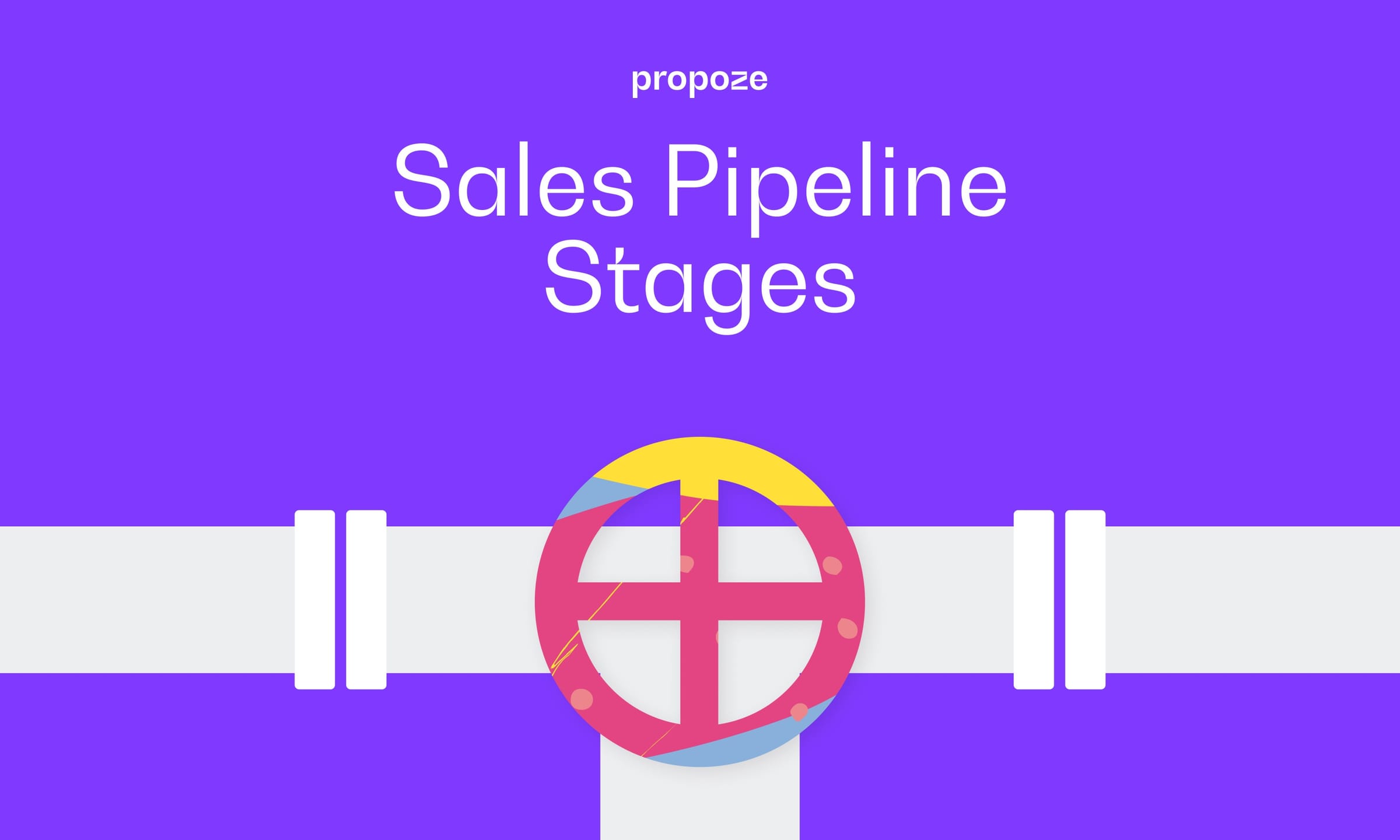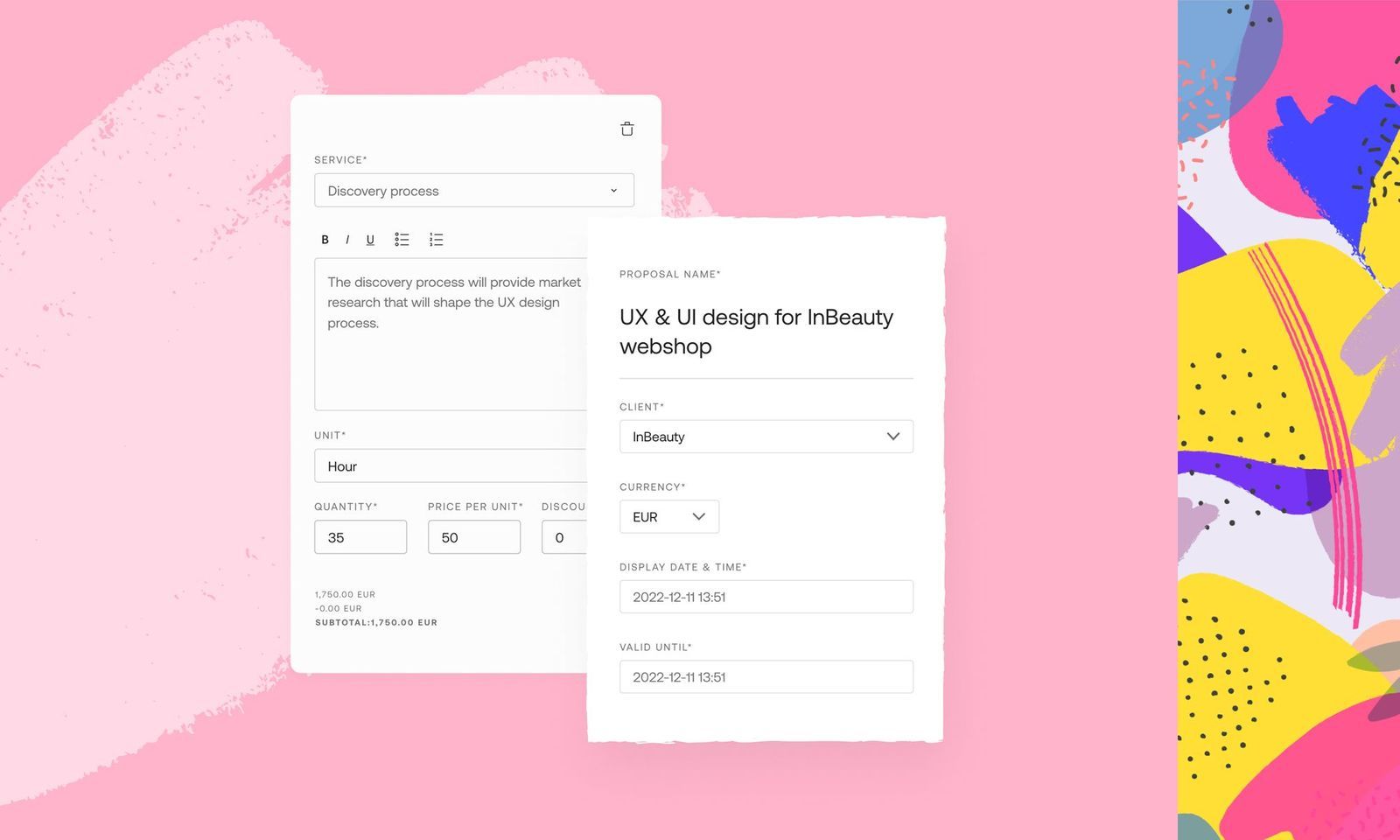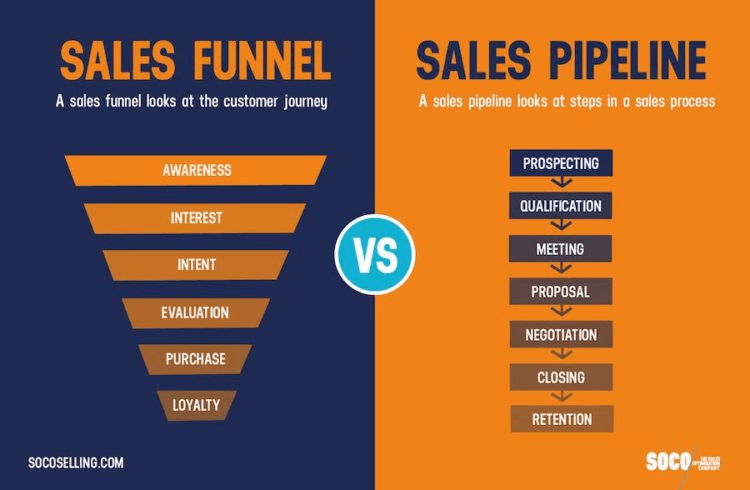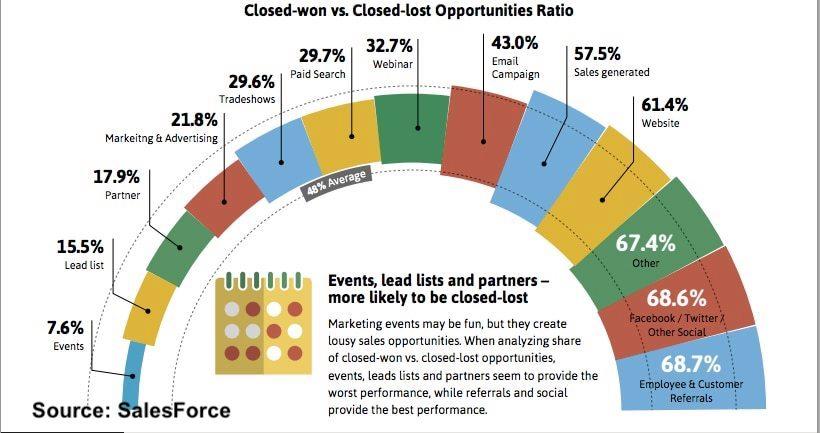7 Stages Your B2B Sales Pipeline Needs to Have
In our latest post, we've covered everything you need to know about B2B sales pipeline stages. From what a sales pipeline is to how to design your own pipeline, we've got you covered.
— Propoze

Sales is the lifeblood of any business. Without a steady stream of leads and sales, it's difficult for companies to grow and thrive. That's where your B2B sales pipeline comes in.
A well-designed sales pipeline can help businesses manage and track their sales process, from lead generation to closing deals and beyond.
In this blog post, we'll take a closer look at what a B2B sales pipeline management is, how to design one for your business, the must-have stages, and how to measure your success.
Whether you're a small business owner, a sales rep, or a freelancer managing your own sales, this short guide will help you build a B2B sales pipeline that drives revenue.
What is a sales pipeline?
A healthy sales pipeline is a systematic and visual approach to tracking potential customers and where they are in the sales process, from initial contact to closing the deal. It allows sales reps and sales leaders to manage and monitor their progress efficiently, identify potential roadblocks, and prioritize their efforts to close deals effectively.
A healthy pipeline typically includes stages, such as lead generation, lead qualification, proposal, negotiation, and closing.

By understanding each stage's requirements, sales reps can tailor their approach to match the customer's needs and improve their chances of winning the deal.
Additionally, it can provide sales targets and forecasts, highlight the sales team's performance metrics, and aid in sales team management by identifying opportunities for coaching and training.
In other words - there's much to gain by systemizing your efforts.
Ultimately, the sales pipeline is a powerful tool that enables sales teams to streamline their efforts, increase their sales efficiency, and maximize their revenue potential.
How to design a sales pipeline for your business
Designing B2B sales pipelines is a critical process that requires careful planning, analysis, and execution.
Here are some key steps you can take to design pipeline stages that work for your business.
Step #1: Understand your customer's journey
Before designing your pipeline, you need to have a clear understanding of your customer's buying journey. This includes identifying their pain points, needs, and motivations at each stage of the process.
Step #2: Define your pipeline stages
Once you understand your customer's journey, you can define the stages of your B2B sales pipeline. Typically, sales pipelines consist of seven sales pipeline stages, including lead generation, qualification, proposal, negotiation, and closing.
Depending on your business, you may need to add or remove stages to fit your specific sales process.
Step #3: Establish criteria for each stage
Each stage of the pipeline should have specific criteria that determine when a lead moves from one stage to the next.
For example, to move a lead from the qualification stage to the proposal stage, they may need to meet certain qualification criteria, such as having a specific budget or timeline.
Step #4: Assign responsibilities
Determine who is responsible for each stage of the pipeline. This can include sales teams, your marketing team, or other stakeholders in suspect company.
Step #5: Identify potential roadblocks
Identify potential roadblocks that could prevent leads from moving through the pipeline, such as objections or competitors. Determine how you can overcome these roadblocks and create strategies to address them.
Step #6: Monitor and measure performance
Regularly monitor and measure your pipeline's performance, including conversion rates, deal velocity, and deal size. Use this data to optimize your sales pipelines and improve your sales performance over time.
Remember, designing a B2B sales pipeline is an ongoing process that requires regular evaluation and optimization. By following these steps, you can create a pipeline that helps you win more deals, increase revenue, and grow your business.
P.S. You'll find the most important metrics you need to track further in this post.
7 must-have B2B sales pipeline stages
A successful sales pipeline consists of several stages that guide your leads toward becoming customers. Here are seven stages you should include in your pipeline.
#1 Prospecting stage
Prospecting is the first stage of the pipeline and involves identifying potential customers or clients. In this stage, your sales reps make the initial contact with the prospect.
This can be done through a variety of methods, including:
- Networking at an industry event or through social media
- Cold calling or emailing
- Referrals from satisfied customers
- Purchasing lead lists from third-party providers
In essence, every marketing or sales campaign that has the goal of attracting new prospects (marketing qualified lead) will help you fill your pipeline with potential customers.
The main goal of prospecting is to create a list of leads in your target market that fit your ideal customer profile and have a need for your product or service - and to generate interest for your products and services.
Once you have a list of prospects who expressed interest in your solutions, you can move on to the next stage of the pipeline - lead qualification.
#2 Lead qualification stage
The second sales pipeline stage is lead qualification. This involves determining which prospective customers are worth pursuing and which are not.
In short, the goal is to identify every sales qualified lead among your prospective leads.
Keep in mind, there are several types of leads a sales rep can encounter:
- Inbound leads - leads that convert on your website
- Marketing qualified leads or sales qualified leads - they typically have certain characteristics that would define additional sales follow up
- Prospective leads - good fit, but didn't take any action on your website or other inbound channels
- Target account leads - leads in specific targeted accounts
- Event leads - leads you meet at industry events
To qualify a lead, you'll need to consider factors such as:
- Prospects' budget. Can your prospective customers afford your products/services?
- Need. Do your prospects need your products/services?
- Decision-making authority. Can your prospects make the purchasing decisions on behalf of their companies?
- Timing. Is the prospect just researching or is the prospect ready to buy?
By qualifying your leads, you can focus your sales efforts on those who are most likely to become customers, saving time and resources in the process.
If a lead does not meet your criteria for qualification, move them back to the appropriate stage or remove them from your pipeline altogether.
The most common way to qualify a lead is through discovery calls. We've prepared a list of the best discovery call questions that will help you qualify more leads - faster. Check it out.
#3 Demo or meeting stage
The third stage your pipeline needs to have is the demo/meeting stage. This is where you have the opportunity to showcase your product or service to leads you qualified in the previous stages.
The goal of this stage is to provide value to the lead by demonstrating how your offering can solve their specific problem or meet their unique needs.
When preparing for a demo or meeting, be sure to:
- Customize your marketing materials to the lead's specific needs
- Highlight the benefits and features of your products/services
- Address any concern or objection your lead may have
- Provide a clear call to action for next steps
- Prepare to discuss goals, challenges, timeline, authority level, market landscape, and urgency with your prospects
Think about your current customers' experience, interview them and gather feedback, and listen to what they deem as their biggest concern. This kind of information can help you both improve your offering and gain more sales opportunities.

Check the image above for a more detailed breakdown of a demo.
A successful demo (or meeting) can help move your lead further down the sales pipeline and increase the chances of a successful sale. Here's a guide with some great tips on how to prepare a demo, so don't miss it!
#4 Sales proposal stage
The fourth sales pipeline stage is the proposal.
This is the step where your sales team presents a formal offer to your lead outlining the specifics of your product or service, including pricing, timelines, and any other relevant details. In this step, your prospects need to know the exact dollar value of your product.
When creating a proposal, be sure to:
- Address the your potential buyers' specific needs and pain points
- Highlight the unique value your offering provides
- Provide clear pricing and any additional costs or fees
- Include any relevant terms and conditions
- End with a strong call-to-action
We know that writing a proposal is never an easy task, so we prepared a detailed guide on writing a proposal! And if you're wondering which tool to use for creating proposals, here's a list of proposal tools that can help.
Just a hint - try Propoze! It can help you create beautiful proposals extremely fast.

In this sales pipeline stage, you'll want to know how the prices you propose deliver more than enough value to offset the engagement cost. At this stage, remember to state your competitive advantages to help differentiate your proposal from other vendors your customer may meet.
To sum up, a well-crafted proposal can help demonstrate your expertise and build trust with your lead, ultimately increasing the chances of a successful sale.
And often, you'll need to follow up after sending a sales proposal to your potential customers. Here's a link to a detailed guide with templates and examples, so you can more easily move your leads to the next stage in the pipeline - the negotiation stage.
#5 Negotiation stage (+ closing)
The fifth stage of the sales pipeline is negotiating and closing. This is where you work with the lead to finalize the terms of the sale and reach an agreement.
During this stage, you'll need to pay attention to a few things. Here's the list:
- Address any remaining concerns and objections the lead may have
- Negotiate terms that work for both parties
- Be clear and transparent about all aspects of the sale
- Provide great customer service and support throughout the entire process
This is the most active part of the entire sales pipeline management process - meaning this is where your customers sign off on the final price and terms. So, in this step, your legal
Keep in mind, negotiation can easily become complex. It entails a number of skills and strategies, and learning how to leverage them is crucial. To help you, here's a guide on sales negotiation that may help you move your negotiations forward.
#6 Winning the deal
The sixth stage of the pipeline refers to winning the deal. This is where you officially close the sale and turn your lead into a paying customer.
So, your lead just bought your product/service and the buying process is finished. Or so it seems. There's a lot to do now when you've gained the trust of a new customer. It's time to make sure your new customer doesn't regret the decision and stays loyal to your brand.
Here's a list of things you'll want to do at this stage:
- Deliver on all promises you've made (!)
- Ensure your customers have all the support they need to succeed with your product/service
- Follow up with your customers to ensure they're satisfied with your offering
- Encourage customer referrals and positive reviews, try to use that user-generated content in your marketing materials
Winning a deal is not the end of the selling process, nor the last of your B2B sales pipeline stages - it's just the beginning of a long-term relationship with your customer.
#7 Post-purchase retention stage
The final stage of the pipeline is post-purchase retention. This stage lasts for as long as your customer doesn't churn.
Here, your focus needs to be on keeping your paying customers happy, ensuring they succeed, and continuously engaging with them to gather as much feedback as you can.
In this stage, try doing the following:
- Provide ongoing support and customer service
- Offer upsell opportunities and promotions to encourage repeat business
- Gather feedback and use it to improve your products/services
- Keep your customers engaged through regular communication (email, social, webinars, or other inbound channels)
Remember, it's easier and more cost-effective to retain previous customers than it is to acquire new ones.
Here, you can explore renewal options with your customers, discuss expanding your customers' business and adjusting pricing, and even encourage your customers to recommend your solution and bring in more inbound leads.
The moment your prospect becomes your customer, you'll need to focus heavily on customer relationship management. Think about ways you can help them succeed with your solution.
Here's a complete guide to customer relationship management, so you can more easily plan your strategy and retain more customers.
Sales pipeline vs. sales funnel - what’s the difference
The terms "sales pipeline" and "sales funnel" are often used interchangeably, but they actually refer to two different things.
Here's how they differ.

A sales pipeline is like a roadmap that guides you through each step of your selling process. It helps you keep track of where each potential customer is in the journey and what you need to do to keep things moving in the right direction. Think of it as a way to stay organized and focused so you can close more deals.
In contrast, a sales funnel is a bigger-picture view that covers the entire customer journey, from when they first learn about your business to the moment they make a purchase. It's a more comprehensive perspective that takes into account both marketing and sales activities.
Even though these terms may seem similar, there are some notable differences between them you need to understand. In short, while the pipeline is specifically tailored to the sales process, a funnel looks at the entire customer journey.
Knowing when and how to use both the sales funnel and sales pipeline will help you achieve your business goals more effectively.
Just a quick side note. Here's our detailed guide to sales efficiency that will help you get better sales results and move prospects faster through your sales pipeline.
Sales pipeline vs. marketing pipeline - what’s the difference
Both sales and marketing pipelines are important concepts in business, but still, they largely differ.
The sales pipeline, on the one hand, functions as a roadmap for potential customers that guides them through all stages of the sales process. It is a way to keep track of where your prospects are in their journey and what you need to do the move them closer to making a purchasing decision.
The marketing pipeline, on the other hand, focuses on the stages the leads go through before they even become a potential customer. In essence, it's a map for taking a lead from the point of first contact with you all the way to becoming a potential customer.
Usually, it goes hand in hand with strategies like inbound marketing, content marketing, lead nurturing, and similar.
You can notice that these two pipelines are connected. First, the lead needs to go through the marketing pipeline. Afterward, those same leads, now potential customers, go through all the sales pipeline stages, finally becoming paying customers at the very end.
Can a sales pipeline have more than 7 stages (and how does it fit into your sales process)
While the typical sales pipeline has 7 stages, it's not set in stone.
The number of stages you need in your sales pipeline will depend on your industry, sales cycle length, and the specific needs of your business.
So, the answer is yes, your sales pipeline can have more than 7 stages. But it can also have less than 7 stages. The key is to ensure that each stage aligns with your sales operations and supports your overall sales goals.
Don't add stages for the sake of it, but rather ensure that each stage is necessary and contributes to the success of your sales efforts.
P.S. Here's some recommended reading for you! We've studied and gathered the most impactful B2B sales trends in a single blog post. Give it a read and stay one step ahead of your competitors!
Which sales pipeline metrics should your sales team measure
When it comes to measuring the success of your sales pipeline, there are several key metrics that you should be tracking.
We'll go through all these metrics, so be sure to write them down somewhere as you continue.
Conversion rate
One important metric is conversion rate, which measures the percentage of leads that move from one stage of the pipeline to the next. This metric is essential for identifying potential bottlenecks in your pipeline and making data-driven decisions to optimize your sales process.
Conversion Rate = (Number of leads at Stage Y / Number of leads at Stage X) x 100%
Lead velocity
Another critical metric to track is lead velocity, which measures how long it takes for a lead to move from one stage of the pipeline to the next. This metric provides insights into the efficiency of your sales process and can help you identify areas where you can speed up the sales cycle.
Lead Velocity = (Number of leads at Stage X - Number of leads at Stage Y) / (Number of days between Stage X and Stage Y)
Average deal size
Average deal size is another important metric to consider, as it measures the average revenue generated from each closed deal. This metric can be used to identify trends in your sales pipeline and to determine which types of deals are most profitable for your business.
Average deal size = Total revenue generated / Number of closed deals
Sales cycle length
In addition, it's essential to track sales cycle length, which measures the time it takes to move a lead from the first stage of the pipeline to a closed deal. This metric can help you identify opportunities to shorten the sales cycle and close deals more quickly.
Sales cycle length = Date deal closed - Date lead entered pipeline
Win rate
Finally, tracking the win rate is crucial for evaluating the effectiveness of your sales team. This metric measures the percentage of deals that your sales teams are able to close successfully and can help you identify areas where your sales team may need additional training or support.
Win rate = (Number of closed-won deals / Total number of deals) x 100%
Closed lost deal and closed won deal
If you're a sales rep, you probably know these two terms down to the core. However, here's what these terms mean, in short:
- Closed-lost deal refers to any situation where a target account (prospect) formally declines to complete the sales process and make a purchase.
- Closed-won deal refers to any situation where a deal has been successfully closed and the prospect becomes your paying customer.

Where to start with designing a sales pipeline
We've gone through all the stages of a sales pipeline, and hopefully, helped you understand how to design one for your business.
As you begin designing and implementing your own pipeline, keep in mind that you'll need to continuously evaluate and iterate to ensure it's completely in sync with your sales process.
There are tons of sales pipeline templates you can use, but if you want to create a pipeline that truly correlates with your sales processes, you may want to start from these seven stages. Of course, you can reduce or increase the number of stages as you see fit, but this should be your starting point.
Luckily, we can help you nail down the fourth stage (sales proposal) with ease. To help freelancers, small business owners, and sales reps across all industries, we've created Propoze - a block-based proposal software.
With Propoze, you can create stunningly beautiful proposals in minutes. Give it a try and let us know your thoughts!
And if you need help setting up your account or figuring out the best way to use Propoze, let us know at support@propoze.app!
Follow us on our LinkedIn, Twitter, and Instagram accounts! We post regularly on proposal and sales-related topics.